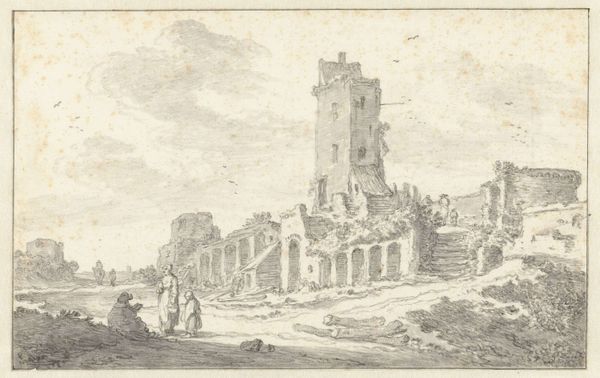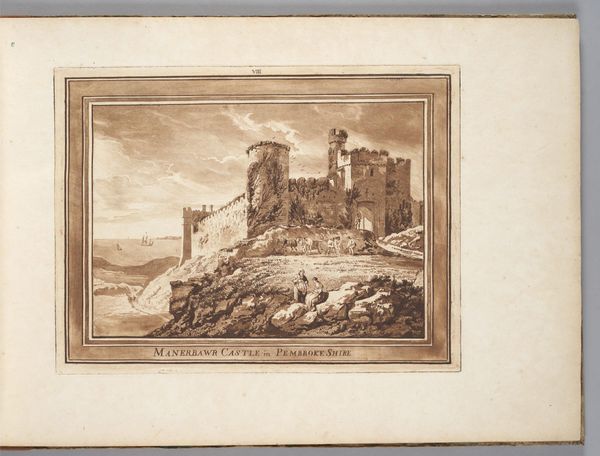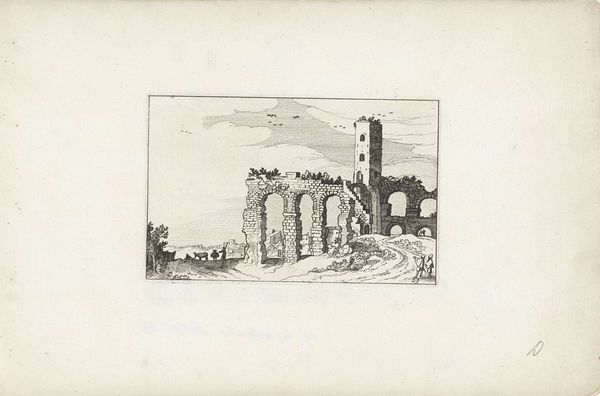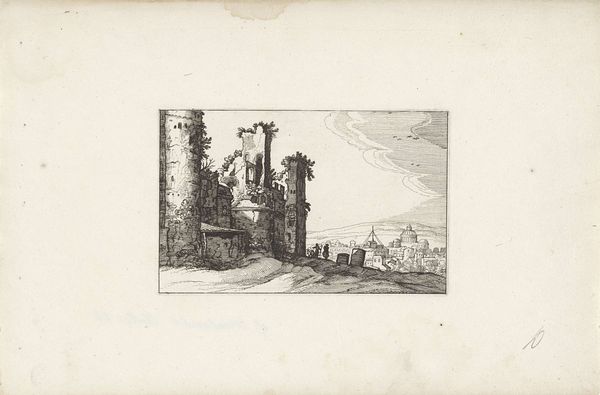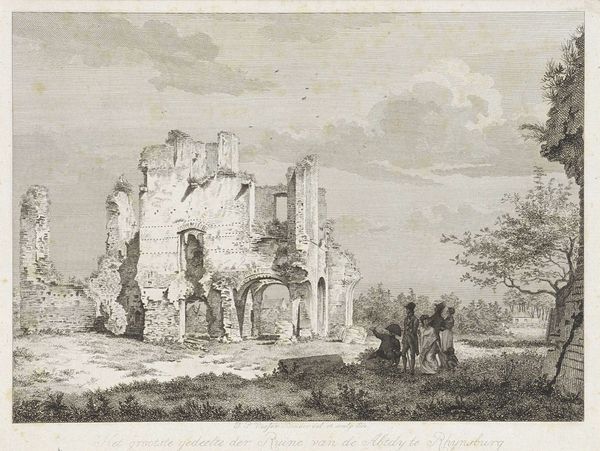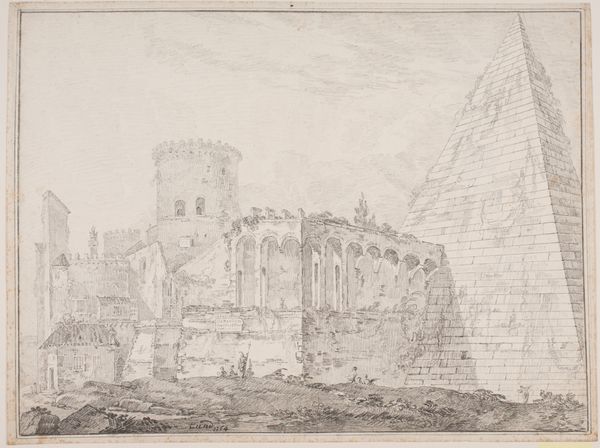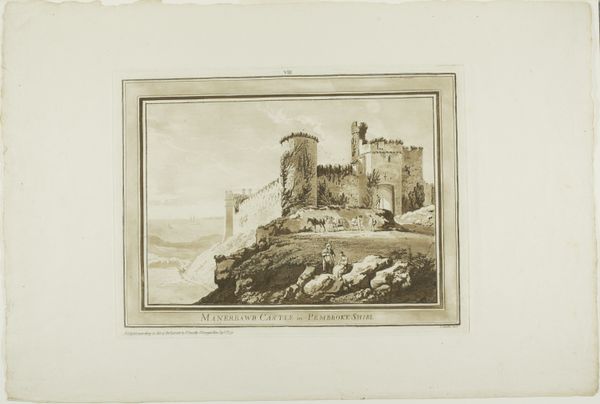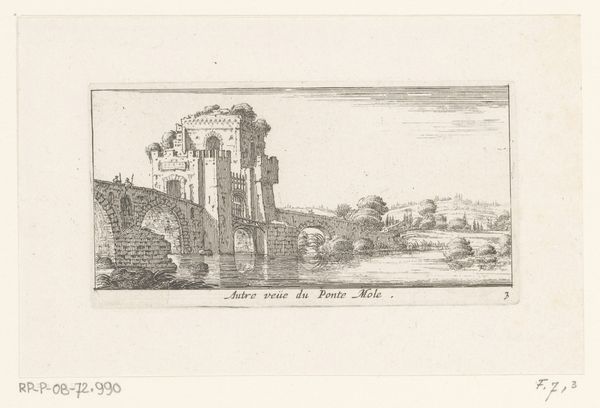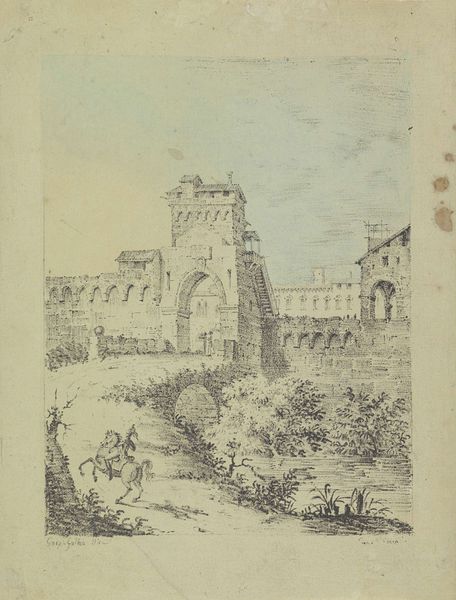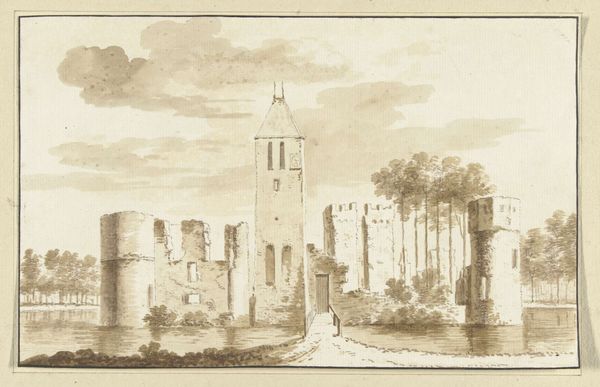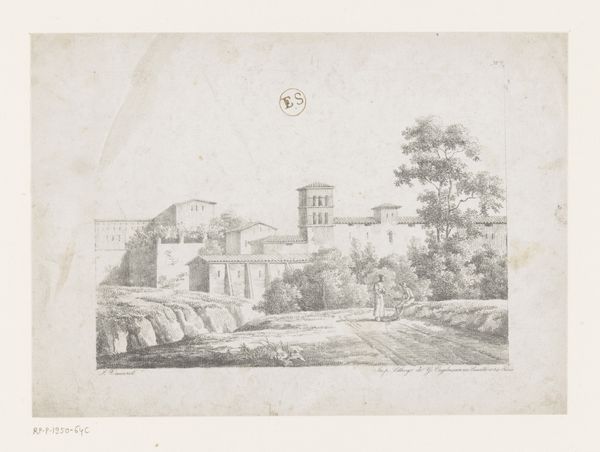
drawing, pen
#
drawing
#
landscape
#
romanticism
#
pen
#
cityscape
#
academic-art
Dimensions: height 85 mm, width 110 mm
Copyright: Rijks Museum: Open Domain
Editor: This pen drawing from 1801, titled *Ruïne van Carlburg bij Carlstadt,* is by Ernst Willem Jan Bagelaar. It depicts the ruins of what appears to be an ancient city or fortress, viewed from the countryside. The delicate linework and somber tones create a very melancholic mood for me. What do you see in this piece? Curator: I see the socio-political currents of the Romantic era channeled through Bagelaar’s pen. The ruin becomes a symbol of temporal power, now decaying back into the landscape. The small figure in the lower right makes you consider the contrast between human ambition and the relentless march of time. How do you think this imagery resonates with an audience during a period of revolutionary upheaval and societal transformation? Editor: That's fascinating. I hadn’t thought of the ruin as a symbol of failed ambition, more a nostalgic yearning for a lost past. The figure in the corner, now that I look at him more closely, does add to the transience idea. Is that a political commentary, maybe about empire or societal collapse? Curator: It certainly gestures in that direction. Consider how the depiction of ruins was fashionable during the rise of nation-states. The artists like Bagelaar found noble or moral messages in the imagery. They invited the viewer to consider the legacy and foundation upon which their own society stood, maybe with an added reminder about inevitable decline and change, which isn’t always destructive, and can also mean rebirth. Editor: That’s a different way to look at ruins! I usually only saw them in terms of pure history or maybe as examples of lost construction. Now I see it connects to then-contemporary audiences too. Curator: Exactly. It underscores how artworks reflect not just historical moments but also invite considerations about a dynamic political era and place. Editor: I never thought about it this way, but analyzing art as cultural artifacts makes it much easier to think about history and current society. Curator: Indeed. Art isn't just an aesthetic object, but rather it is a testament to its contemporary cultural conditions and setting.
Comments
No comments
Be the first to comment and join the conversation on the ultimate creative platform.
